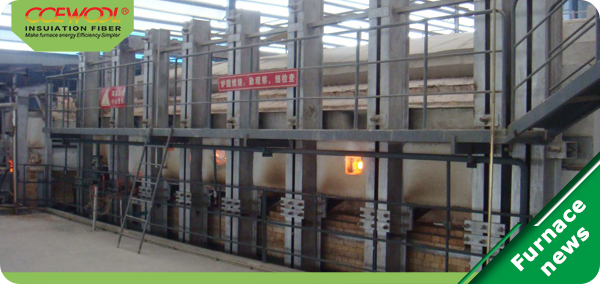
Jun. 08, 2016
Lightweight refractories is most important auxiliary material for ceramic furnace to improve firing efficiency and energy saving. So select proper refractory materials for ceramic enterprises is very important.

The principle of kiln and kiln car to select refractory insulation is thermal insulation and energy-saving.
Under different situations, chemical corrosion resistance and other properties should be considered depending on the intensity of the furnace situation.
Normally, one new type refractory is better for internal insulation such as aluminum silicate fiber (CCEWOOL ceramic fiber ), high-alumina ceramic fiber board (CCEWOOL 1400 high alumina ceramic fiber board ) and felt. Other lightweight refractory material could be selected as supplement.
Basing on operating temperature, ceramic fiber products is divided into: common ceramic fiber blanket (CCEWOOL 1050 common ceramic fiber blanket ), standard ceramic fiber blanket (CCEWOOL 1260 standard ceramic fiber blanket ), high-purity ceramic fiber blanket ( CCEWOOL 1260 high-purity ceramic fiber blanket ), high alumina ceramic fiber blanket (CCEWOOL 1400 high alumina ceramic fiber blanket ) and zirconium-containing ceramic fiber blanket ( 1450 high alumina ceramic fiber blanket ). These products can be used in different parts of the kiln furnace .
These materials will not only help reduce the kiln temperature difference and to facilitate uniform baking products, but also to reduce the heat under the car , reducing the metal parts under the kiln cars and car temperature. Surface brick and around of the kiln car linings brick are always exposed to high temperatures, bearing load and withstanding cyclical temperature changes, so material of this parts should be able to withstand the high temperature load and resistant to cold and hot blast. All above conditions met, we should maximize the use of materials with good thermal insulation properties .
The better performance of furnace insulation, the less heat dissipation, the higher of the furnace thermal efficiency , Energy- saving is the better.
